
It may come as a shock to the one British visitor of this blog, but Pimm’s is not universally well known. Not known at all in fact, even in this former corner of the Empire. I had to order it special just to get my hands on two bottles, I know right? Apparently however, it has been quite popular in New Orleans for decades, to the point that it is sometimes claimed as a purely local Big Easy drink. Cough, cough. Philistines. Cough.
Sidebar: NOLA is the only place that I can strongly associate, from the top of my head, with three different cocktails that are still in vogue: The sazerac, the vieux-carré and the hurricane. NYC could have been up there, but who drinks clover clubs and Bronxes nowadays?
Pimm’s is synonymous with the one cocktail you make with it, The Pimm’s cup. I can hear your objections, there are many cocktails that can be made with Pimm’s. True, but how many have you actually had? On a regular basis? That’s what I thought.
The Pimm’s cup is a long drink with a specific calling. Essentially a talisman for summer, it’s about enjoying warm sunny days and beating the heat. I have it on good authority, that wildly enthusiastic Londoners will buy a case at the first hint of a late spring sun’s glimmer, even glimpsed through clouds, actual weather predictions be damned. Today it is most often seen at posh events like Wimbledon, regattas and polo matches, but it seems to us that where it really lives best is in your garden or in a park.
The Brits, who can be quite civilized when it comes to drinking, though you would not necessarily know it if you’ve ever been to Blackpool on a Friday night or around a soccer match, tend to prepare it by the pitcher. I think that’s protestant Anglo-Saxon work ethic and efficiency at its best. They make the Pimm’s cup with lemonade, but not exactly what you just thought of, apparently it’s more like Sprite but tart, something perhaps close to a lemon-lime soda in North America. A forum for British expats (yes, my web search history is convoluted), suggests to those faced with a dearth of “real” lemonade, the use of soda water with lime and lemon juice added. So rather on the dry side. Other people make it with tonic, ginger ale, or Champagne, which is then called a royal Pimm’s cup. I honestly don’t know about mixing with champagne, feels a little pretentious, but hey, drinkskultur rule #1: drink whatever you want. In any case, the combination possibilities are quickly overwhelming, specially when trying different “lemonades”, tests will have to follow.
So what is Pimm’s?
It was created in the 1820’s or 1840’s, depending on who you trust, as a health tonic by a gentleman named James Pimm, it was meant to aid digestion and was sold only at Mister Pimm’s oyster bar. Funny all those alcoholic beverages to aid digestion. If you attempt to drink Pimm’s neat, you will see that it bares more than a passing resemblance to Angostura bitters, but sweeter, which was also originally meant as medicine.
Sidebar: It is interesting to note the popularity of oysters as an affordable foodstuff in the late 19th, early 20th century, when oysters would be sold out of carts by street vendors and the like. One of the cheap pub foods, it was sometimes offered free with drinks. Taverns in Montreal (probably up to the 1950’s), would actually sell you a pint with a shucked oyster already in it. The glass would come wrapped in a napkin because frankly it looks sort of gross. Trust me on this. The cheapness and popularity of oysters was largely true in the U.S. as well, but all that changed the world over when the local oyster beds got depleted.
Anyways, one might wonder about the state of the oysters at Mister Pimm’s place if such a digestive tonic was needed, but perhaps it was just marketing. Cheerio lads, I’m not drinking, I’m actually taking my medicine and all that. Apparently Mister Pimm realized his patrons stayed longer (and possibly fought and vomited less) if they did not drink gin neat. So he went ahead, diluted and flavoured some gin. I feel Pimm’s ties in well with the whole flavoured alcohol movement I associate with the 19th century. I suppose in England it also helped make gin a little more respectable, which it was in dire need of, more on the “gin craze” in another post. Today, at 25% in the bottle, further watered down with a mixer, usually in at a 1:3 ratio, it gives you a drink around 6% ABV. Sip them slowly and you can drink this for a long time before keeling over.
So Pimm’s is a gin based drink, mixed with an array of herbs, fruits, liqueurs and possibly quinine. Sources vary on whether that last one it is still used or not, I certainly hope so, if only for the sake of fighting malaria. As per usual with that category of alcohol (i.e. Campari, Jagermeister, Picon, etc.), the recipe is a well guarded secret. Some DIY enthusiasts approximate its taste by mixing gin with sweet vermouth and dry orange peels, but we are not convinced. It is called No. 1, because that used to denote the size of the tankard it was served in. After it became really popular, the range of Pimm’s was extended all the way from No. 1 to No. 6, simply using different alcohols as the base. It’s quite normal you’ve never heard of them, they are mostly extinct today or relegated to niche markets.
Very well, but what about the recipe? I’m getting thirsty over here.
Though of course recipes vary, they almost always do, for us there’s no Pimm’s cup without cucumber, strawberries and mint. After that you can go wild. Apples, oranges, flowers, it’s all good if it tastes good. The flowers part is actually quite traditional, it seems borage was the original garnish. That plant with a cucumber like taste, was replaced with you guessed it, cucumber, as it became harder to source. The New Orleans version only uses cucumber and mixes it with North American lemonade topped with 7-Up.
My Pimm’s cup
- 1.5 ounce of Pimm’s
- 4.5 ounces of lemonade, only 3 ounces if I’m wearing my spiked bracelet
- Lots of cucumber spears or wheels, strawberries and mint sprigs
- Don’t try to save money on the ice, be really generous with the cubes, fill that glass
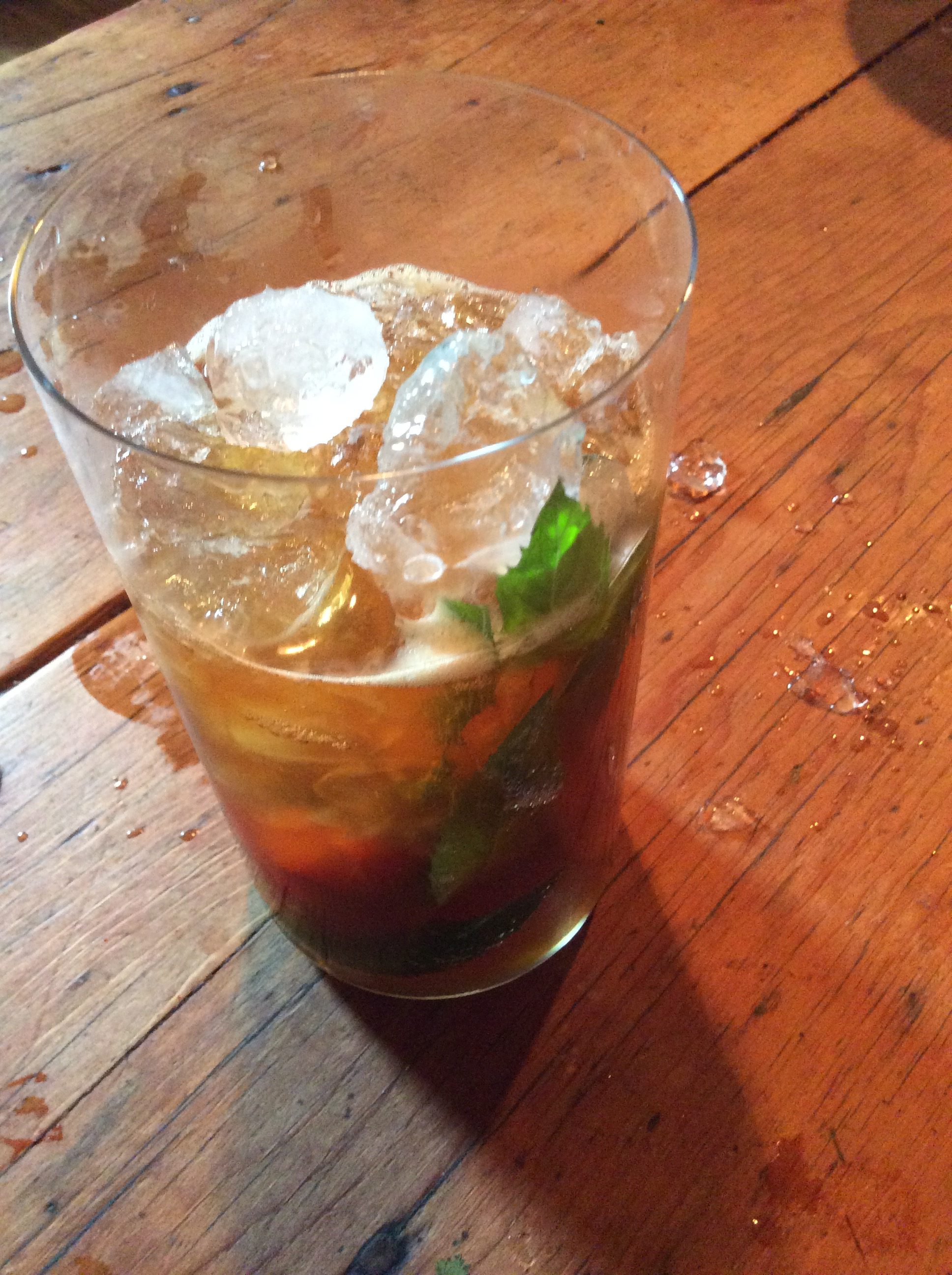
Mixing hint: don’t prepare it too much ahead of time if doing it in a pitcher. A jug of the stuff in the fridge for more than a couple of hours will dull the taste of the garnishes and instead of say, the bright taste of mint, you’ll get the stewed version. Ditto for the cukes, and no one likes mushy strawberries.
But what “lemonade” shall we use? Let the empirical testing begin.
The first contender was Sanpellegrino’s limonata, I have no idea how it relates to British lemonade, but I found it a bit sweet. Still eminently drinkable though, nothing half an ounce of lime juice would not cure. Goes fantastic with bourbon or whisky by the way, you’re welcome.
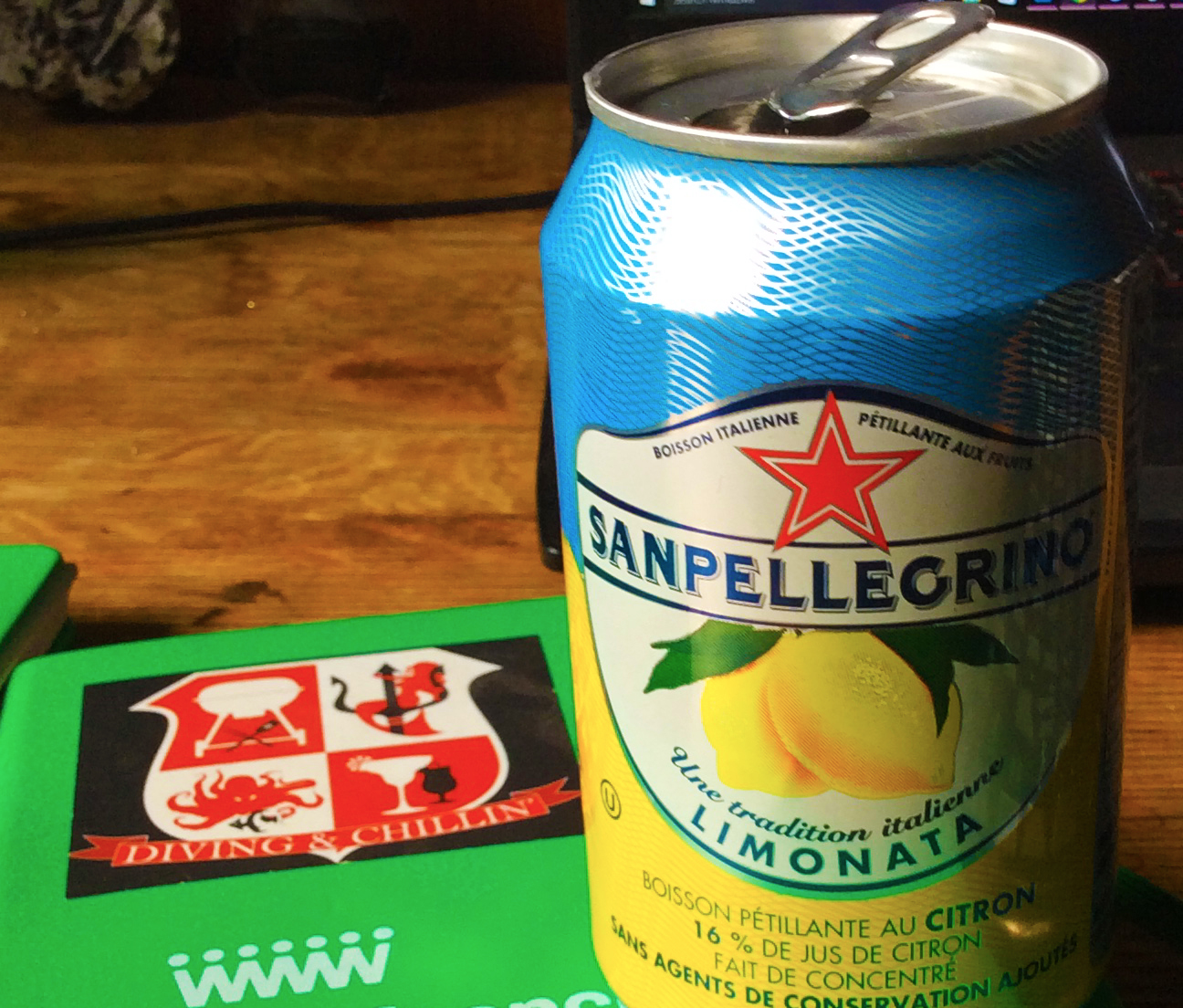

Than I got organized.
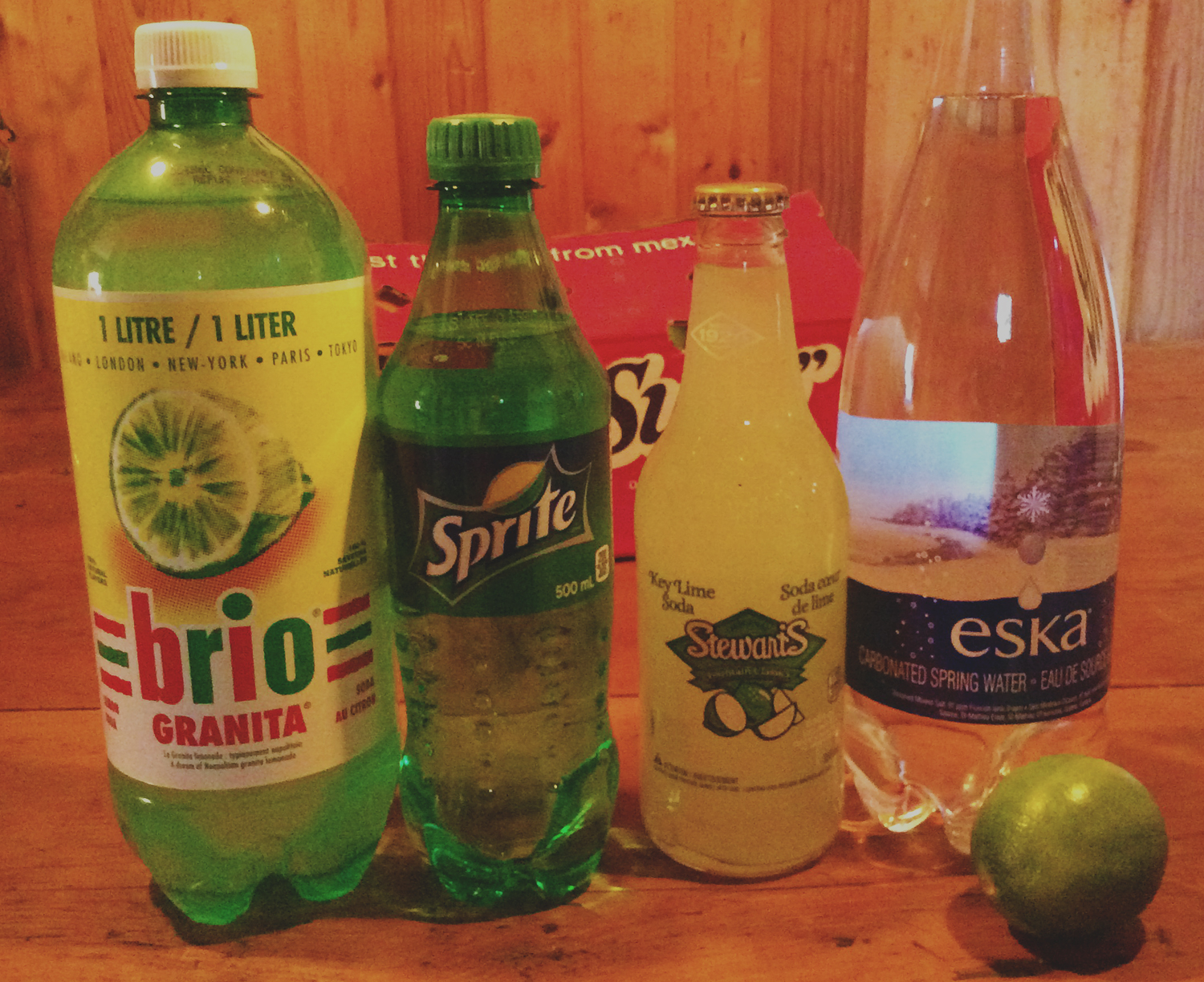
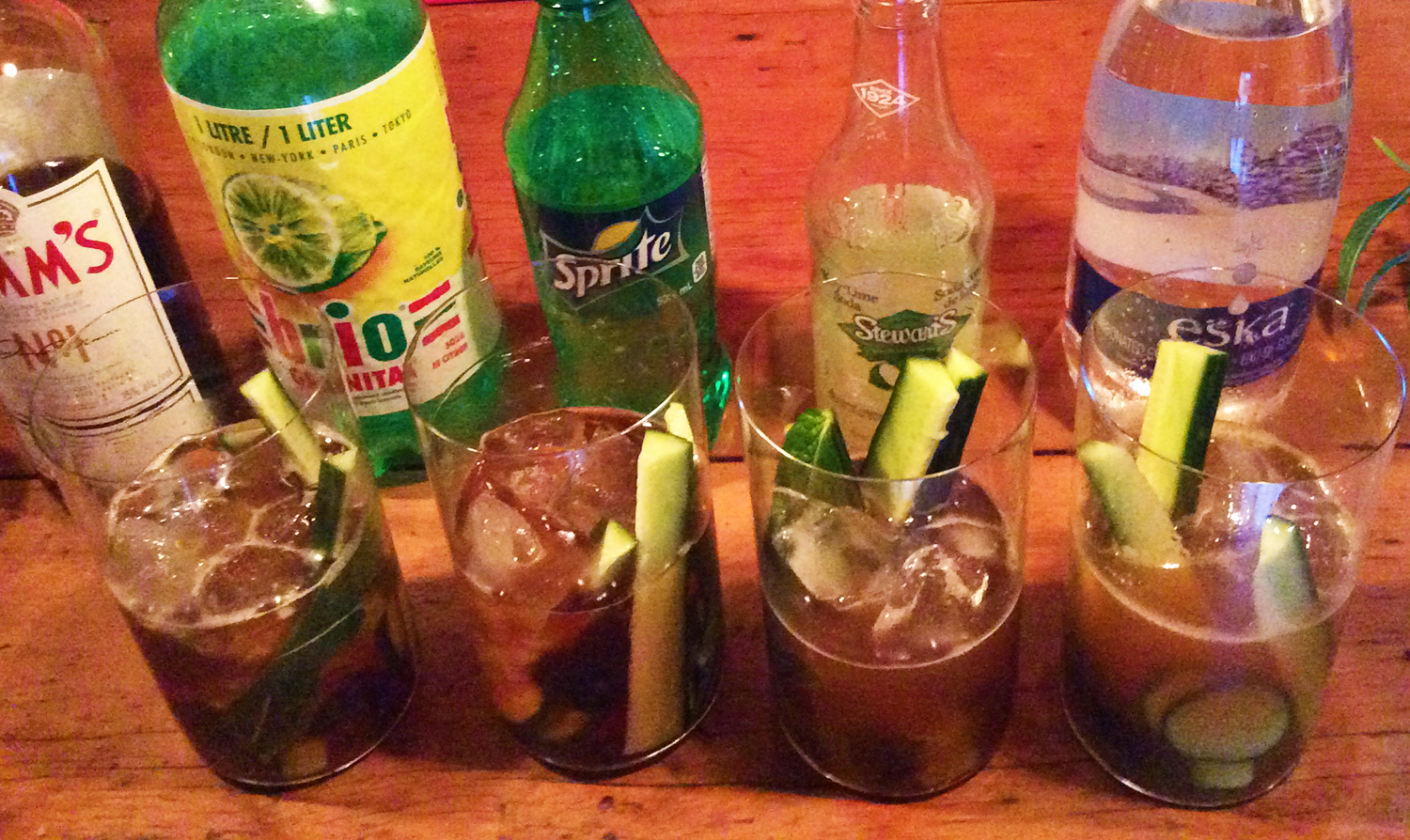
I’ll spare you the blow by blow. Suffice it to say soda water with lime was way too tart, and the lemon sodas all tasted, to one degree or another of furniture polish. Blah. I had not expected it, but Sprite was the winner. With half an ounce of lime juice added during the second round, it was very close to “yes, I feel good about serving this to the Queen.” Here you go your majesty.
But the spike bracelet version was the best of all. Here you go Mister Idol.
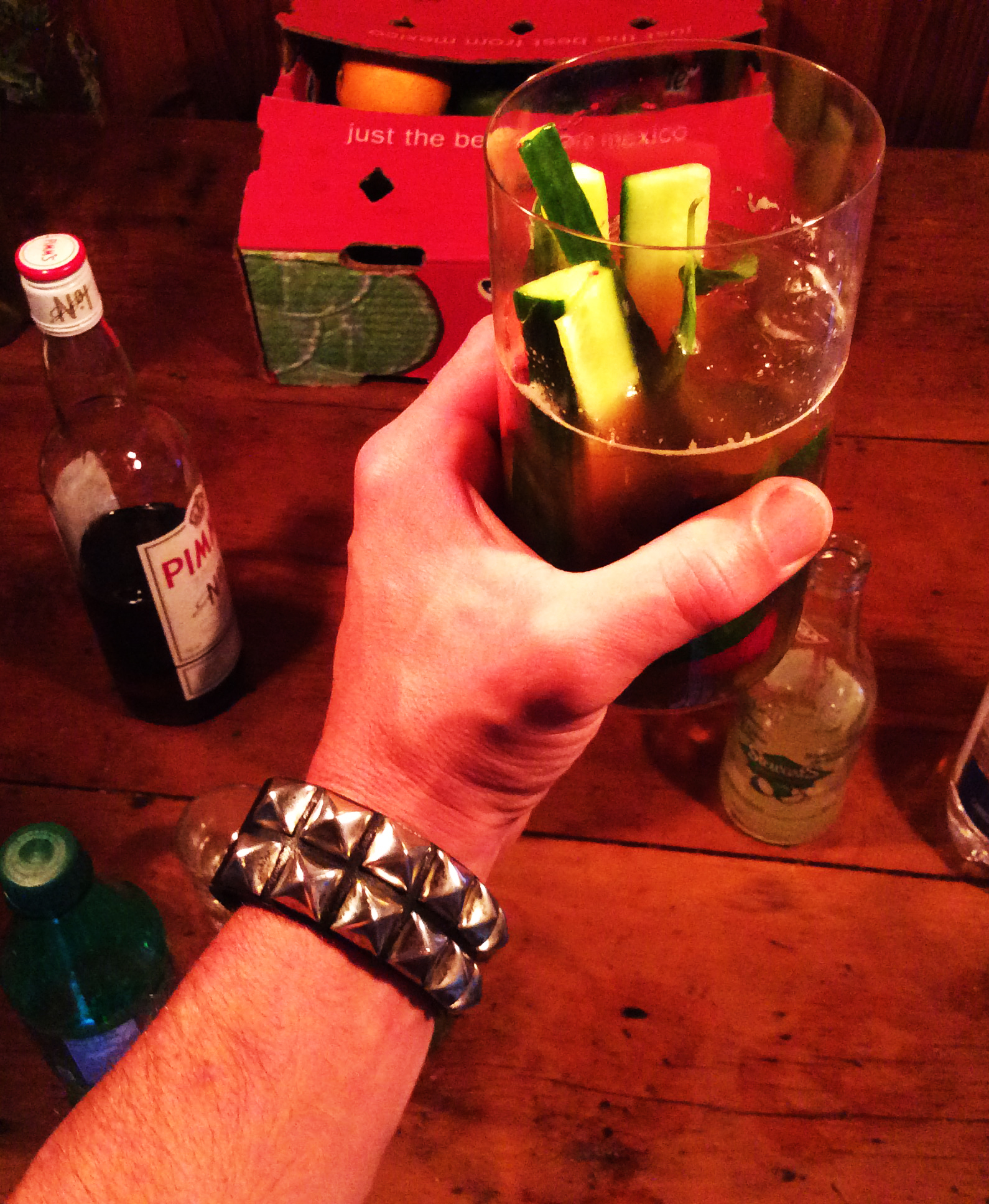
Cutting down the mixer to a 1:2 ratio instead of the 1:3 really tied together all the flavours and made the drink less sweet and cloying. Victory!
Enjoy it while the sun is out.
Talk to you soon.

Dude! You want borage? You need to talk to the herbalist. I got some in my garden!
Ahrumphf…hmmm. curious I am……